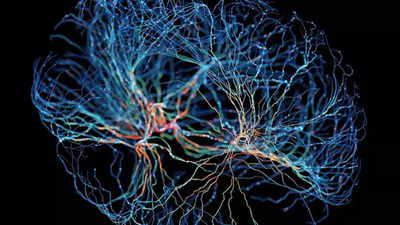
Image source: HowStuffWorks
Brain mapping
is a fascinating scientific endeavour that investigates how our brains are structured and how they change over time. This process examines how learning, ageing, mental illness, and brain diseases physically alter the brain’s structure.
Researchers are using brain mapping to create a comprehensive understanding of the brain's intricate anatomy, much like Google Earth allows us to zoom in from satellite images of the entire planet to specific streets and buildings.
A complete brain map would reveal our brain's regions, functional lobes, neuron circuits, and individual neuron connections.
Brain mapping is more than just a technical achievement; it holds the key to understanding the very essence of human consciousness, learning, and mental health. As researchers continue to explore the mysteries of the mind, the future of brain science looks promising.
What is brain mapping?
Brain mapping is a multidisciplinary approach that involves various techniques to understand the structure and function of the brain. It provides insights into how different regions of the brain interact and how they contribute to
cognitive functions
, emotions, and behaviours.
How does brain mapping work?
Brain mapping works through a variety of techniques and technologies that provide insights into the structure, function, and connectivity of the brain. Here's a breakdown of how different brain mapping methods work:
Structural brain mapping:
Imaging techniques: Utilises imaging methods like MRI (Magnetic Resonance Imaging) and CT (Computed Tomography) scans to create detailed images of the brain's anatomy.
Focus: It helps in identifying brain structures, detecting abnormalities (like tumours), and understanding the physical layout of different brain regions.
Functional brain mapping:
Techniques: Involves methods like fMRI (
functional MRI
), PET (Positron Emission Tomography), and EEG (Electroencephalography).
Focus: It assesses brain activity by measuring changes in blood flow, electrical activity, or metabolic processes during specific tasks, thereby mapping which areas of the brain are involved in various functions.
Electrophysiological mapping:
Techniques: Involves recording electrical activity from neurons using methods such as intracranial electrodes or surface electrodes.
Focus: It helps to understand the timing and patterns of brain activity, which is essential in studying neural networks and cognitive processes.
Connectomics:
Techniques: A more advanced area focusing on mapping the connections (or wiring) between neurons and brain regions.
Focus: It aims to create a comprehensive map of neural connections, helping researchers understand how different parts of the brain communicate and work together.
Key technologies behind brain mapping
Brain mapping involves the use of a variety of tools to capture images of the brain, convert them into data, and analyse that data to understand brain development. Both functional and structural
neuroimaging
techniques are utilised in this research. Scientists often compare healthy brains to diseased ones to determine structural differences and understand how brain functions are affected by various conditions.
Several key technologies are used in brain mapping, including:
Computer axial tomography (CAT): X-rays the brain from multiple angles, showing structural abnormalities.
Magnetic resonance imaging (MRI): Creates detailed images using the brain’s water content, offering better resolution than CAT scans.
Diffusion tensor imaging (DTI): Tracks water movement to image neuron tracts connecting brain regions.
Researchers also use methods like electroencephalography (EEG), positron emission tomography (PET), functional MRI (fMRI), and transcranial magnetic stimulation (TMS) to examine brain activity and stimulate parts of the brain.
Recent advancements have led to revolutionary techniques, such as Brainbow, which labels neurons with different colours to study connections in a living brain. Another technique, known as ATLUM (Automatic Tape-Collecting Lathe Ultramicrotome), creates a wiring diagram of the brain by slicing it into thin ribbons, allowing researchers to visualise the structure of neuron connections.
These techniques are primarily used on animals like mice, but the potential for studying human brain connections is immense. Such studies could help scientists understand how our brains adapt and learn, as well as the physical underpinnings of mental illnesses like autism and schizophrenia.
Practical applications of brain mapping
Brain mapping has practical applications in medicine, particularly in treating neurological disorders. For example,
neurosurgeons
use functional MRI and EEG to precisely locate seizure centres in epilepsy patients, guiding safer surgeries.
Brain mapping is also used in diagnosing neurodegenerative diseases like Parkinson’s and Alzheimer’s. By monitoring changes in brain structure over time, doctors can better understand how these diseases progress and how treatments impact brain function.
Additionally, brain mapping can be used to study psychiatric disorders, revealing structural abnormalities in the brain. Research has shown that schizophrenic patients experience loss of matter in the temporal and prefrontal cortex over time. Brain imaging is also being used to study disorders like bipolar disorder, depression, anxiety, and panic disorder.
The future of brain mapping
While current brain maps are far from complete, the potential for more detailed maps is within reach. By continuing to refine imaging technologies and methods, scientists aim to develop comprehensive maps that show not only brain structure but also how various processes unfold over time, from birth to death. As technology advances, brain maps could help unlock answers to how we think, feel, and experience the world.
Also read: NASA’s stunning visuals of the sun, stars, galaxy, and stellar universe












 English (US) ·
English (US) ·